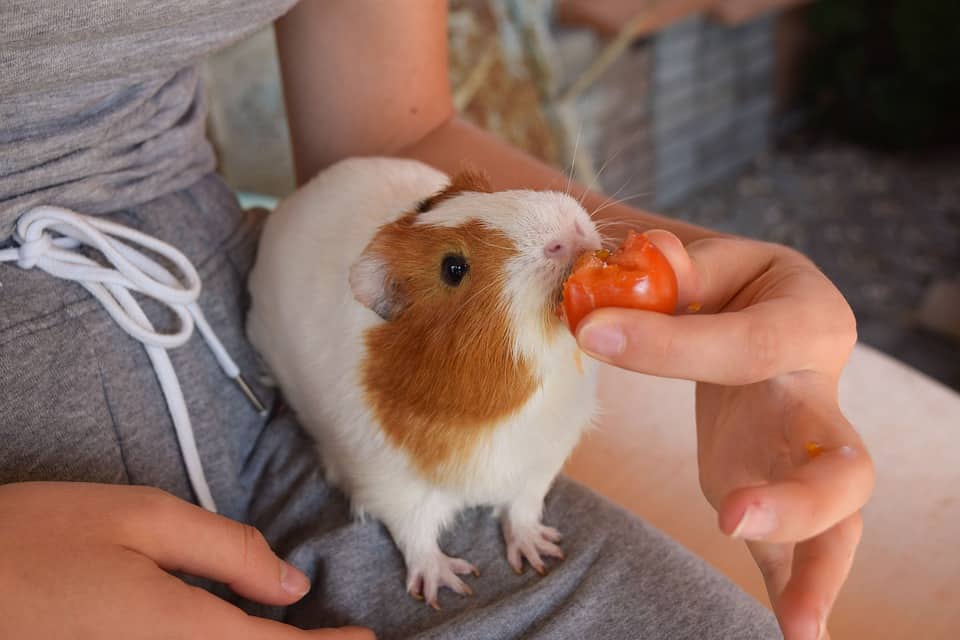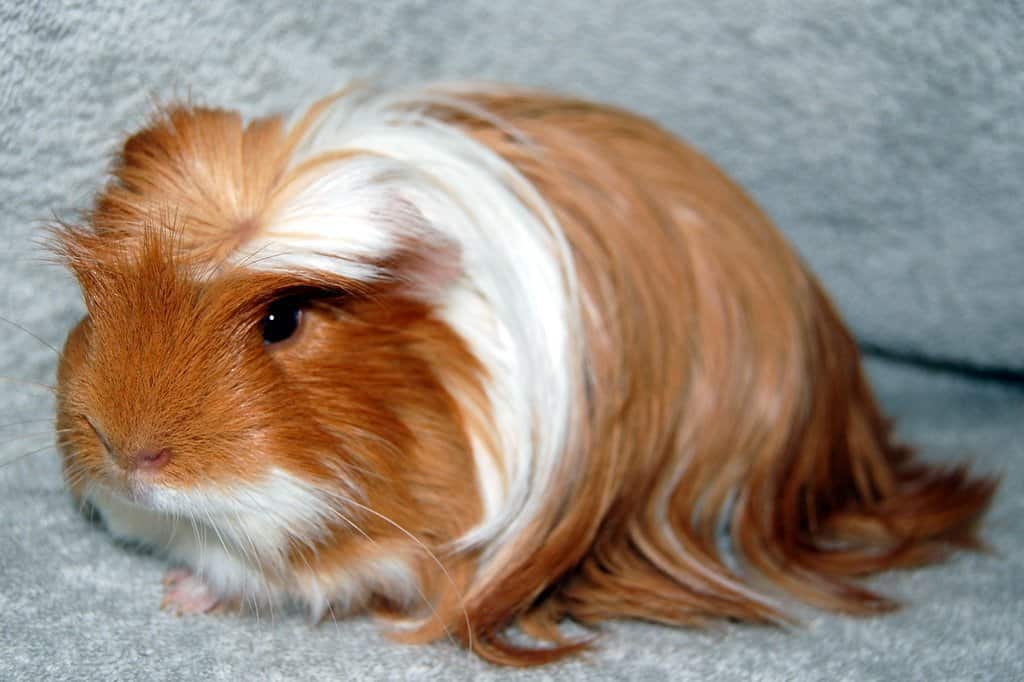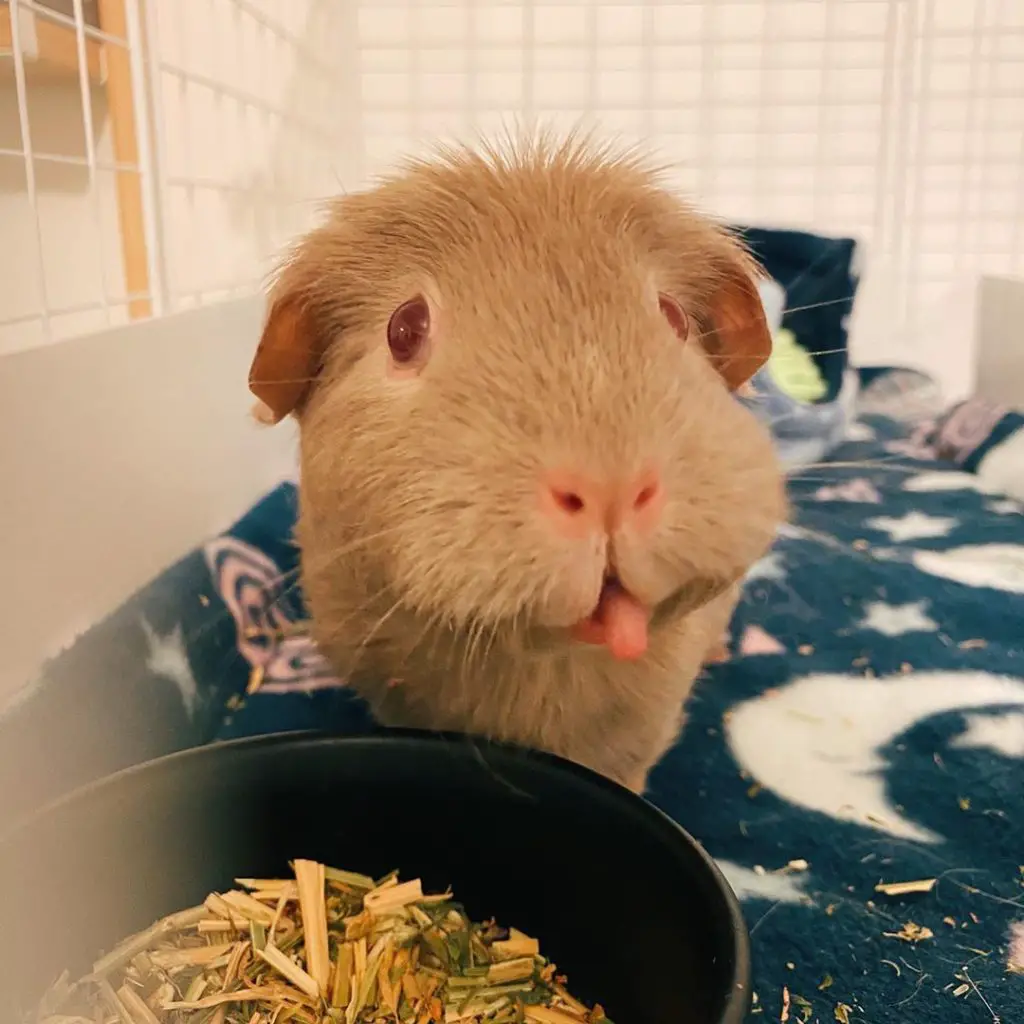Guinea Pigs are known for their adorable squeaks, high-speed zoomies, and their ability to make a celery stalk disappear in under a minute. They make wonderful pets, especially for small children learning how to be responsible, and for those who need an easy-to-care-for companion. Piggies also make for great entertainment as they love to play and can be very affectionate.
You may think this is all you want or need to know about Guinea Pigs, but there is always more to learn about our animal companions, especially about their bodies. Their bodies are very different from ours, so people naturally have a lot of questions about them. An informed owner is a responsible owner and we all want to give our pets the best life possible. We’ve rounded up 15 common questions to both entertain and inform you about your squeaky piggies.
Do guinea pigs have a tail?
You’ll notice that your neighbor’s cat, the science class turtle, and even hamsters have a tail. Now take a look at your cavy and you’ll find that these little guys are one of the few mammals that do not have a tail! With a whopping 258 bones in their bodies, seven of which are their tailbone, they have evolved to not have tails.
A part of the rodent family, Guinea Pigs are unique. While their rat and mice cousins have long tails, used for warmth and balance, piggies have no visible tailbone. Although they love to run fast through their tunnels and zip through fabric curtains, you will not see a Guinea Pig climb or jump.
A piggy’s body is compact, small, and not designed for climbing or jumping. Since they cannot climb or jump to safety from predators, a tail would be an easy target for a hungry hunter. So, while a dog’s wagging tail is a sign of happiness, you won’t find a tail on your piggy but their happy little squeaks are more than enough!
Do guinea pigs have belly buttons?
Almost all mammals give live birth, except a few that do lay eggs, and therefore must be able to feed their babies while in their tummies. This happens through the umbilical cord that will feed the fetus inside the mother’s belly which then will form into a belly button. As Guinea Pigs are mammals, this means that they do have a belly button!
Are you curious where their belly button is located? Wonder no more, it’s quite easy to find! You can find your piggy’s belly button by carefully feeling along the belly. However, while searching for their belly button is fine, make sure to never flip your piggy over. This triggers their flight response and can cause both you and your piggy unnecessary stress.
Do guinea pigs have nipples?
Since mammals need to feed their babies, they will have nipples that provide milk to nurse their young. Guinea Pigs may be small and their babies even smaller, but they do need to nurse just like any other baby mammal. While it will be hard to see your piggy’s nipples as they are small, covered with fur, and on their belly, which your piggy will not show you voluntarily, they are there!
If you are breeding or have a pregnant cavy, you will notice their nipples will be enlarged and more visible than usual. This is normal as they are preparing to feed the new babies but should be monitored closely with a vet for any abnormalities.
Do guinea pigs have two stomachs?

While the cavy digestive system is quite unique, they do only have one stomach. They do have a sac behind the stomach called the “caecum” that is filled with friendly bacteria. This sac helps break down the tough diet cavies eat and helps their bodies absorb those important nutrients.
While it may be a bit gross to us humans, Guinea Pigs have adapted to get the nutrients that don’t break down in the caecum back into their bodies. Since the caecum is behind or after the stomach in the digestive flow, Guinea Pigs have to digest certain nutrients, poop them out, and you guessed it, eat those poop pellets. Gross, right? But it’s highly important for a cavy to receive those nutrients and a trait that many mammals share.
Do guinea pigs have paws or feet?
Guinea Pigs have tiny, adorable paws! With four claws on their front paws and three claws on their back paws, piggy’s nails need to be trimmed regularly. In the wild, these nails would wear down naturally, but on more comfortable beds of hay and fabric, they’ll need your help to stay healthy.
Piggy’s paws should also be checked regularly for sores, spurs, and bumblefoot. These are common diseases in Guinea Pigs, especially since their paws are smaller and support a short, round body.
Do guinea pigs have eyelids?
You may find yourself staring at your piggy, daring them to blink. Be warned though, they will win that game! Guinea Pigs do have eyelids but only use them to remove dust and dirt from their eyes and to sleep at night. Cavy eyes are also less sensitive to light like a human’s eyes, hence why they don’t blink as often. So, you may be tempted to see them blink, but you’ll be waiting for a long time, as they can sleep with their eyes open too!
Do guinea pigs have good eyesight?
With their eyes situated on the sides of their faces, Guinea Pigs have an estimated 340-degree view and see 33 images per second, which prevents blurriness when they turn their heads. This is important for survival in the wild as they can see wherever a predator may approach from. While that is more images than a human, cavies have limited eyesight and do not rely on it heavily.
They are able to see in a full range of colors and recognize objects and food, but their vision is limited and rather poor compared to their other senses. They have adapted to work with their eyesight though and live full, healthy lives.
Do guinea pigs have cheek pouches?
Unlike hamsters or squirrels who carry around food in their cheek pouches, Guinea Pigs do not have these pouches. Piggies do not have the natural instinct to hoard food like other mammals and will almost always finish their meal. You won’t find them stuffing food around their pens or hiding carrots in their sleeping areas.
They would be extra adorable with cheek pouches, but these little guys have no use for them. If your piggy does have puffy or swollen cheeks, take them in to see the vet, as this is a sign of a health issue.
Do guinea pigs have fur or hair?

Scientifically speaking, there is no difference between fur and hair. Both fur and hair are made up of keratin protein. Usually, “hair” is mostly used to describe humans and “fur” for our animal companions. So, you may find that some people refer to their piggy’s coat as their hair and some may call it their fur, but both are correct!
Just like humans, piggies require grooming to keep their coats looking sharp and healthy. Using a comb or brush to free your piggy’s coats of tangles will help create a bond with them and prevent painful hair and skin issues.
Do guinea pigs have good hearing/sensitive ears?
Many prey animals have evolved to have heightened senses of hearing to keep themselves safe from predators. Long before the Guinea Pig was domesticated, these little guys had to survive in the wild by relying on hearing dangerous sounds. While now our furry friends live safe lives in comfy enclosures, they still have incredible hearing!
A Guinea Pig’s hearing is at a much higher frequency than a human’s, much like a dog. With such sensitive hearing, piggies are able to differentiate between their owner and other people, and most famously, when the fridge is being opened! Those adorable little ears are able to twitch around to catch sounds up to an astounding two miles away. While tiny, these little guys will always know when a predator is coming.
Do guinea pigs have a strong sense of smell?
Along with their incredible hearing, Guinea Pigs have a strong sense of smell that almost matches a dog’s. Combined with their hearing, piggies use their sense of smell to identify danger. With limited eyesight, they had to rely on their sense of hearing and smell to survive in the wild. Now, you’ll notice that your piggy uses its strong sense of smell to identify foods, other piggies, and even you!
When you do see those noses twitching, that’s their nostrils bringing in the molecules to be sent to the brain to figure out if it’s a threat or food. They’ll then act on those smells and either rush to the food dish or dash to their safe space. Their sense of smell is so good, they even have smells that they don’t like!
Can guinea pigs sweat/do they have sweat glands?
Guinea Pigs are native to the colder regions of the Andes Mountains in South America. Even though domestication has brought them around the world to all different climates, Guinea Pigs have not developed sweat glands and therefore cannot sweat. This is especially important to note for owners who live in hotter temperatures as piggies can easily overheat.
It is important to always have fresh water available for Guinea Pigs and to never let them be in hot temperatures without ice packs, water, and shade. You can also provide them with water-rich vegetables to help keep them hydrated and cool on hotter days.
Do guinea pigs have tongues?

Naturally clean creatures, Guinea Pigs need to have something to groom themselves with! If you watch carefully, you might catch your piggy grooming themselves with their tiny pink tongues. They use their tongues to groom themselves, eat, and drink.
Much like us humans, cavies have saliva on their tongues that help break down their food as they eat. So while they can demolish vegetables with their strong teeth, they also need their tongues to aid with digestion. Many owners can also observe their Guinea Pigs using their tongues to work the non-stop water bottle to drink.
Do guinea pigs have whiskers?
If people say that whiskers make a person look distinguished, then Guinea Pigs are very dapper indeed! With 23 whiskers on both sides of the face that are the width of piggy’s body, these little guys’ faces become even more adorable! The main purpose of their whiskers is to navigate tunnels and small spaces. Whiskers have nerve endings that are able to tell how close an object is to the piggy’s body.
If a space is too small, a Guinea Pig will not enter the space. They will also use their whiskers to feel objects close to their bodies, as their depth perception is poor due to their limited eyesight. This means they can figure out what’s in their enclosure by simply feeling around with their whiskers!
Can guinea pigs Jump?
Along with the happy squeaks and speed races around the room, Guinea Pigs can also express their joy in another unique, fun way. You may see your piggy suddenly jump straight up in the air and while it can be startling, you’ll soon realize it’s a sign of happiness in your piggy! This is called popcorning and some other mammals do it as well, such as chinchillas and rabbits.
A Guinea Pig’s high jumps can be over anything as simple as a new toy or dinnertime but have also been observed when they notice their owner coming home. Does it get any cuter than that?
Conclusion
There is so much to learn about our pet companions, which helps you be a more responsible pet owner. It’s even better when they’re fun facts and not necessarily questions you’d think of asking. Guinea Pigs are unique pets that bring joy and affection to anyone’s home.
For a final fun fact, Guinea Pigs sometimes give out tiny kisses with their tongues as signs of affection and happiness. Be sure to care and bond with your piggy and you may get one of these special kisses!
- How Long Do American Eskimo Dogs Live? Important Factors and Care Tips - September 29, 2023
- Do American Bulldogs Need Grooming? Essential Tips and Care Guidelines - September 29, 2023
- Do Bengal Cats Enjoy Playing? Essential Tips for Keeping Them Active - September 29, 2023